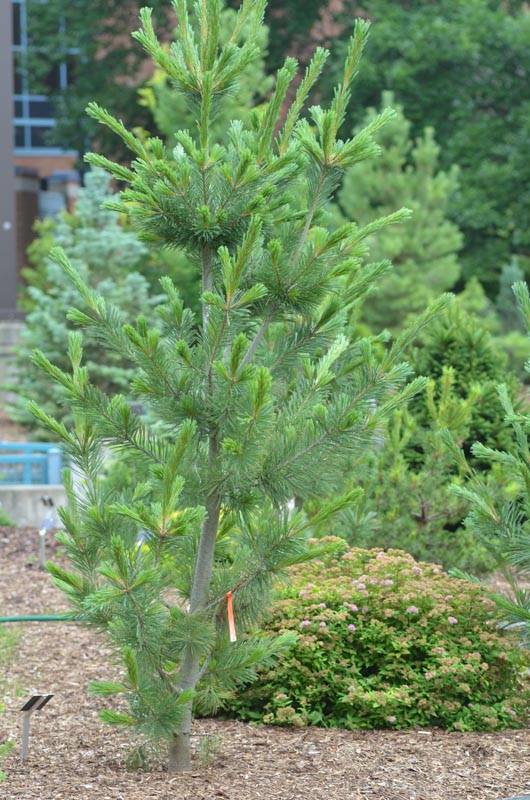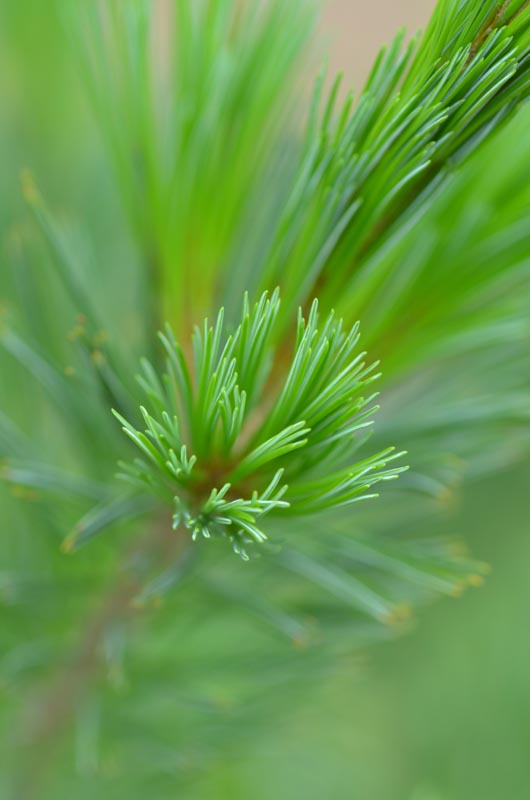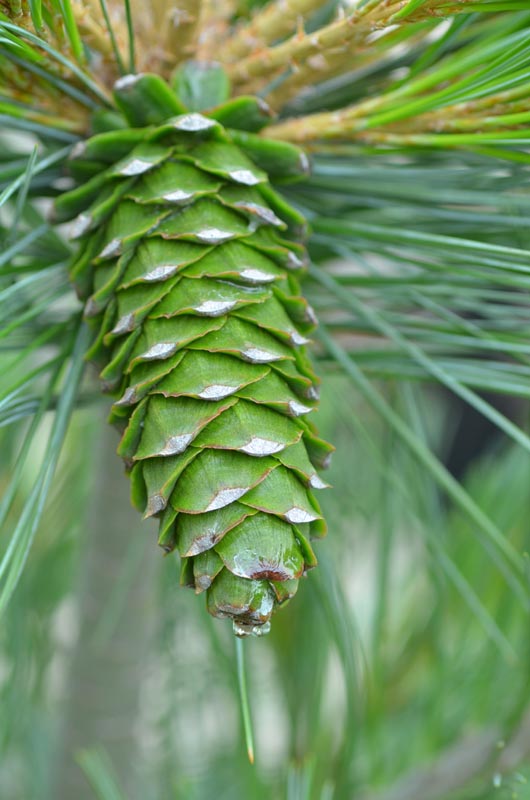| General Description | Pinus flexilis 'Vanderwolf’s Pyramid' is a dense, broad, pyramid-shaped evergreen tree. Needles are dark green with silvery blue undersides. Bark is smooth, light grey or grey-green that may turn grey-brown as the tree matures. |
| ID Characteristic | Attractive dark green and silvery-blue needles are in fascicles of five and densely crowded at branchlet ends. Flexible, shiny green stems can be tied in a knot. |
| Shape | Upright pyramidal form. |
| Landscape | Used in landscape plantings such as parks, estates, shopping centres and public areas. Has an interesting silhouette and branching habit with showy silvery-blue dark green foliage which make it a good solitary feature or in small groups as opposed to mass plantings. A handsome specimen with great adaptability; often used for screening, shade or windbreak. |
| Cultivation | Very adaptable though it grows best on rocky slopes. Prefers moist, well-drained soil and will grow well in full sun or partial shade. |
| Pests | Low maintenance with few problems. White pine blister rust, a bark disease that is usually fatal, is the biggest danger. The earliest symptoms are indistinct chlorotic spots on the needles. |
| Notable Specimens | The Gardens of Fanshawe College, London, Ontario, Canada. |
| Habitat | Horticultural origin. |
| Bark/Stem Description | Light grey or grey-green when in it's early stages and turns a grey-brown as it matures. Tough, flexible branches are separated by deep fissures. |
| Flower/Leaf Bud Description | Sharply pointed with an ovoid shape, about 1.3 cm long. |
| Leaf Description | Attractive dark green, silvery-blue needles in fascicles of five, densely crowded at the end of branchlets, sharply pointed, and to about 5 - 7.5 cm long. |
| Fruit Description | Short-stalked sub terminal cones, light brown and quite resinous, 7.5 - 15 cm long and 2.5 - 5 cm wide, erect when young and hang pendulously when mature. |
| Colour Description | Bark is light grey-green when young, becoming grey-brown as the tree matures. Needles are dark green with a silvery-blue underside. The cone is light brown. |
| Texture Description | Medium texture: smooth bark and sharply pointed needles. |


